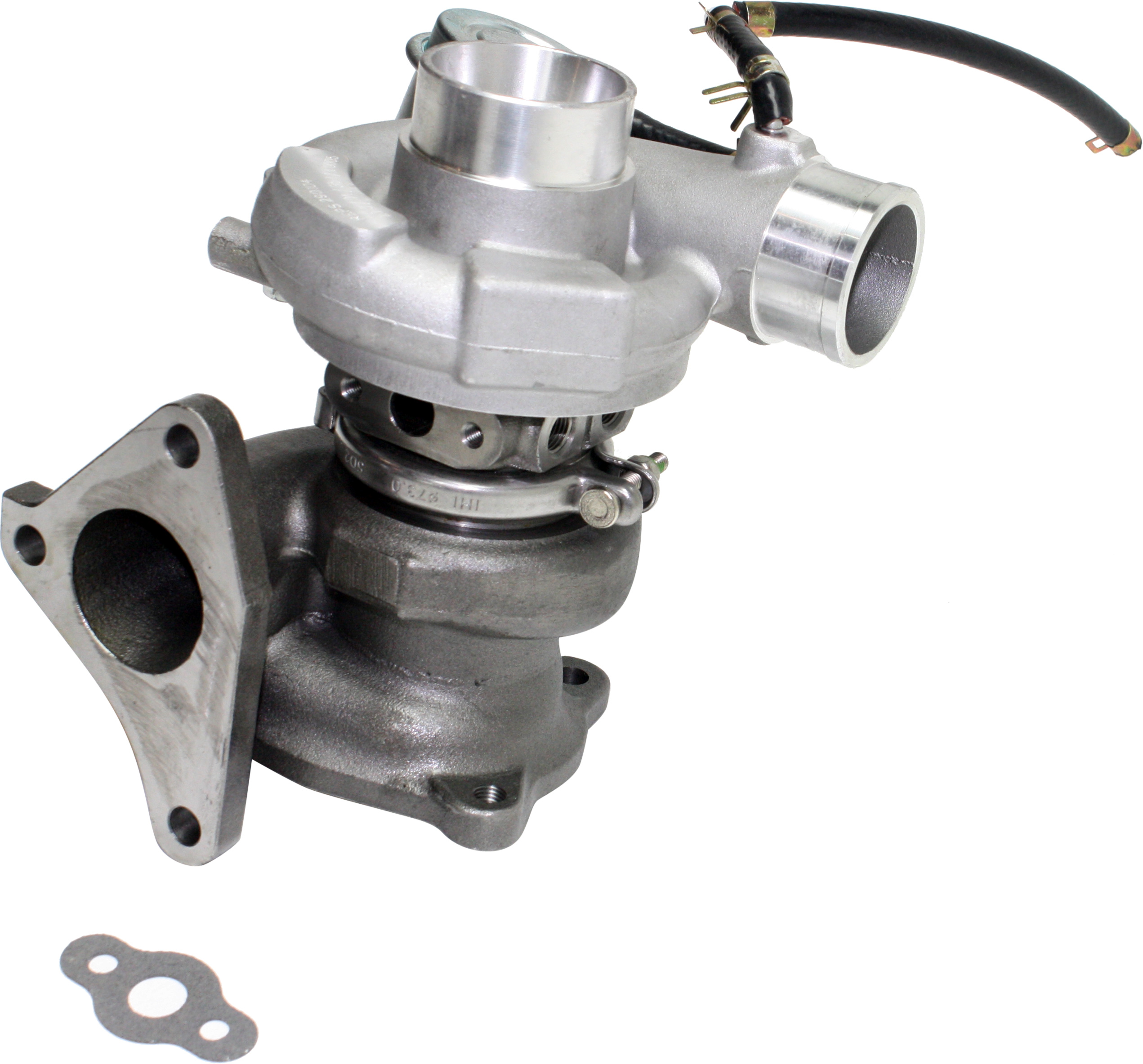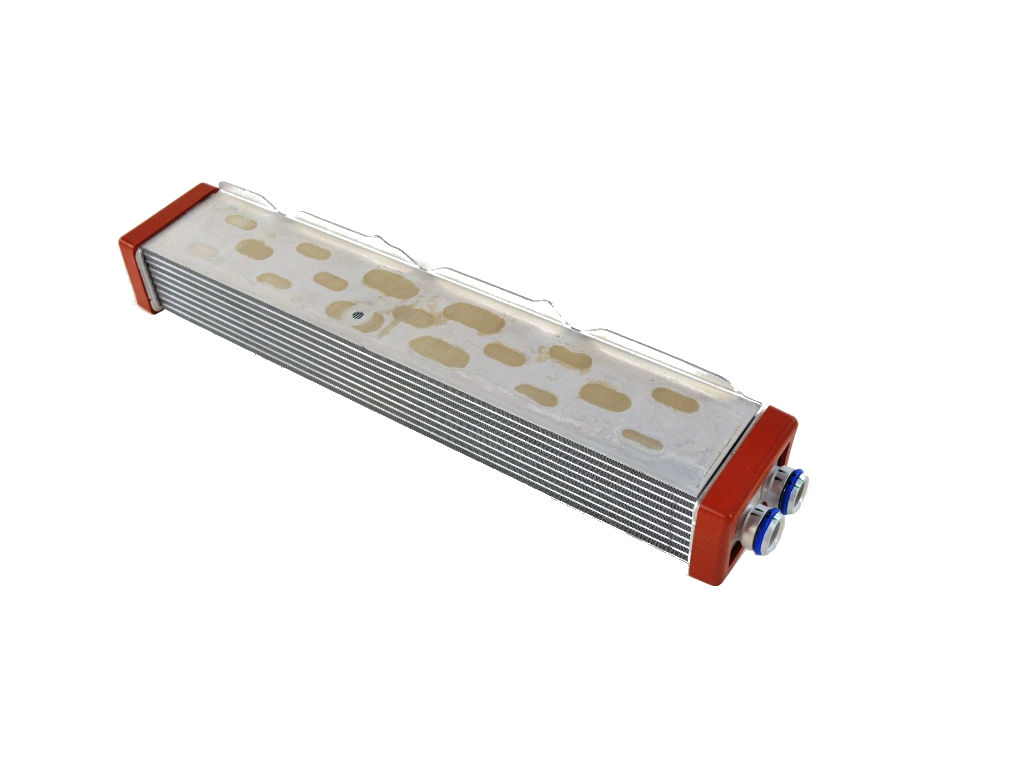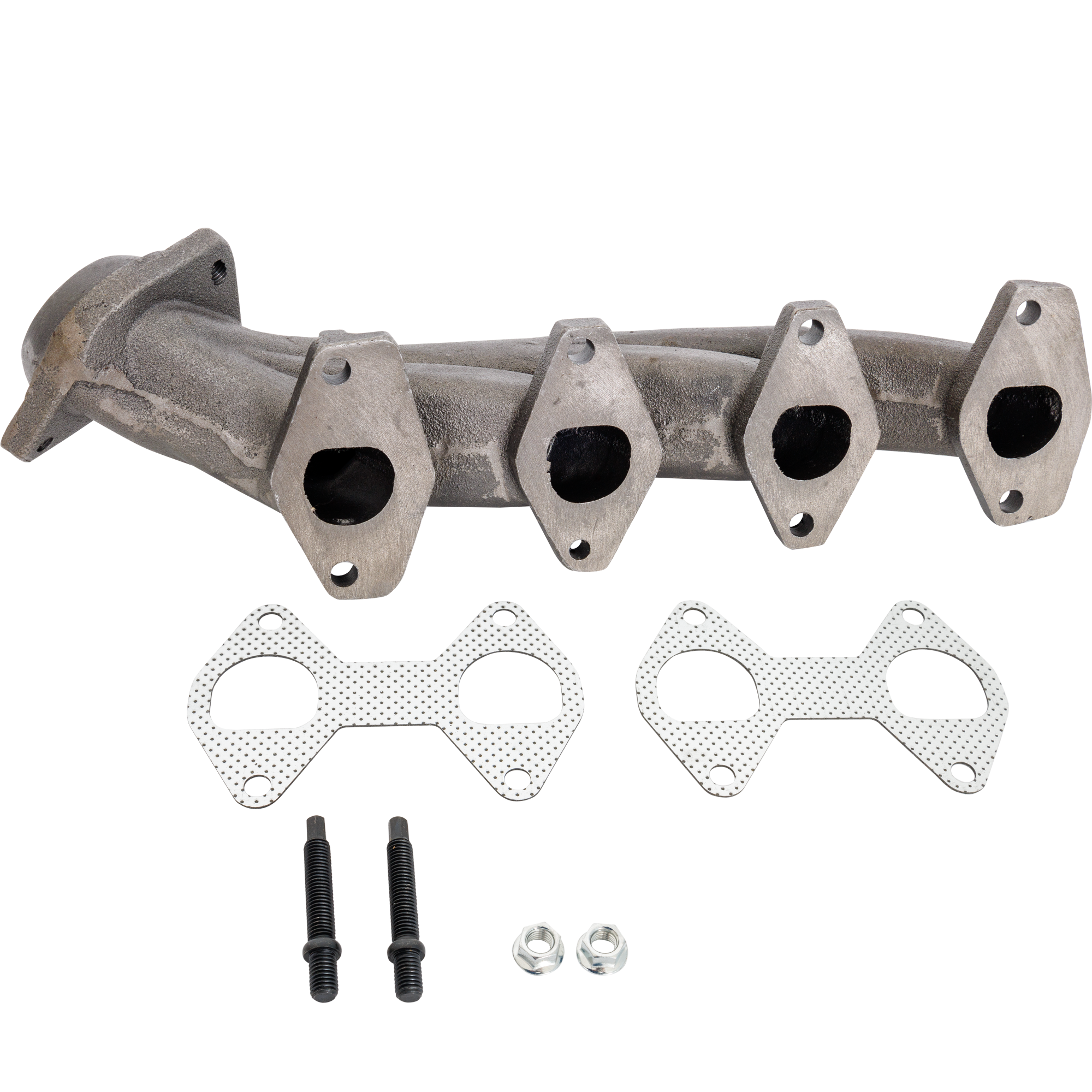Today’s consumers demand more power and better fuel economy from their vehicles than ever before. As a result, more and more automakers are downsizing and turbocharging their engine options. Even large trucks, such as the Ford F-150, now benefit from smaller, turbocharged engines.
Your car might be one of many that now has a turbocharger under the hood. Like any other automotive part, that turbocharger can eventually fail, and when it does, you’ll likely notice one or more troublesome symptoms.
What is a Turbocharger?
Some gas-powered engines—and nearly all modern diesel engines—rely on forced induction from a turbocharger. A turbocharger is essentially an exhaust-driven air pump that forces extra air into the engine. More air entering the engine leads to a denser air-fuel charge and greater power.

A turbocharger has a turbine chamber and compressor chamber, each of which contains a wheel. The two wheels are connected by a shaft that’s supported by bearings. You’ll find the turbine’s inlet is attached to the exhaust manifold, and the compressor’s outlet is in series with the intake manifold (often with an intercooler in between).
When the engine is running, exhaust gases from the exhaust manifold turn the turbine wheel. Because a shaft connects the turbine wheel to the compressor wheel, the rotating turbine wheel forces the compressor wheel to turn. As a result, the compressor wheel pulls air through the engine’s intake system and forces that air into the intake manifold. The increase in air pressure that the turbocharger creates is known as “boost” pressure.
Most vehicles have an intercooler located between the compressor’s outlet and the intake manifold. The intercooler is designed to lower the temperatures of the charge air to increase density and power even more.

Also, all turbochargers must have some way to regulate boost pressure, as too much boost can cause internal engine damage. Vehicles with a traditional turbo typically use a type of valve, called a wastegate, to regulate boost pressure. In other instances, a variable geometry turbocharger—a type of turbo that uses internal vanes to control exhaust flow through the turbine—is used.
The video below outlines turbocharger operation:
Signs of a Bad Turbo
A turbocharger can eventually fail over time. Common turbo failure symptoms include the following:
Note: Because other problems can present the same symptoms as a faulty turbocharger, you (or your mechanic) should perform a thorough diagnosis of the vehicle before performing any repairs.
Illuminated Check Engine Light
The engine management computer, which is often referred to as the powertrain control module (PCM), monitors the turbocharger for boost and wastegate problems. If the PCM detects a problem with the turbocharger, the module turns on the check engine light and stores a corresponding diagnostic trouble code (DTC) in its memory.
Lack of Power
A turbocharger’s purpose is to increase power. So, naturally, if the turbocharger fails, there’s a good chance you’ll notice a lack of power.
Strange Noises
In some cases, you may notice the turbocharger making a whining, squealing, or rattling sound. A whining or squealing sound is often caused by worn-out bearings, while a rattling noise usually means that the wheels inside of the turbo are contacting the housing. Turbocharger noise will typically increase with engine speed.
Oil Consumption and Exhaust Smoke
Failed turbocharger bearings can allow oil to leak past the internal turbocharger seals, leading to oil consumption and white-gray smoke from the exhaust pipe.
Oil Leaks
Faulty turbocharger seals can result in oil leaking from the turbocharger.

How to Test if Your Turbo is Working
In the past, diagnosing a faulty turbo was a fairly straightforward affair. But nowadays, turbocharger control systems include a variety of sensors and other electronics that can make troubleshooting difficult. Furthermore, there are variable geometry turbos and other advanced designs that often require a unique diagnostic approach.
As such, it’s a good idea to consult a repair manual or repair database for the diagnostic strategy for your application. There are, however, a few things you can look out for on all turbochargers, including the following:
Pay Attention to the Boost Gauge
If your vehicle is equipped with a boost gauge, pay attention to the reading on the gauge. An abnormal boost reading usually points to a problem with the turbocharger, its control system, or a related component.
Listen for Abnormal Noises
Sometimes you’ll hear a whining or rattling sound, indicating that the turbo is on its way out. You can use a mechanic’s stethoscope to verify that the turbocharger is the source of the noise.
Check for Diagnostic Trouble Codes
Modern vehicles will often set a DTC when there’s a problem with boost pressure or the turbocharger’s wastegate. Two of the most common turbocharger DTCs are P0299 Turbocharger/Supercharger “A” Underboost Condition and P0234 Turbocharger/Supercharger “A” Overboost Condition.
Although codes don’t tell you exactly what’s wrong with the vehicle, they do provide a starting point for further troubleshooting. Codes P0299 and P0234 can both be caused by a failed turbocharger wastegate, but there are other possibilities, as well.
Inspect the Turbo for Damage and Play
If possible, remove the air intake ducting going to the turbocharger to access the compressor wheel. Look for signs that indicate the wheel has been contacting the housing or that foreign objects might have damaged it.
Then, using your hand (or a pair of needle-nose pliers), move the wheel up and down and side to side, looking for play. If the wheel exhibits excessive play, the turbocharger bearings are worn out, and the turbo needs to be replaced.
The video below demonstrates checking the turbocharger for excessive internal play:
Turbo FAQ
Sometimes, a turbo will simply wear out over time. In other instances, there may have been external factors that contributed to the turbo’s demise. Common causes of turbocharger failure include:
• Lack of lubrication from dirty oil or a low oil level
• Damage from foreign objects getting sucked in through the air intake
• High exhaust temperatures
Turbochargers are designed to last the life of the vehicle, but that can only happen with routine upkeep. To help your turbocharger last longer, you’ll want to stay up-to-date on oil changes. It’s also important to replace the air filter regularly to prevent dirt and debris from getting sucked into the turbo.
If you choose to have a professional replace your car’s turbocharger, you can usually expect to pay somewhere between $500 and $2,500 to get the job done. Of course, the exact cost will depend on various factors, such as the year, make, and model of your vehicle.
You can save money by replacing the turbocharger yourself if you have the tools and the know-how. CarParts.com has a wide variety of replacement turbochargers available for various makes and models.
Where to Get a Turbocharger Replacement for Your Ride
A failed turbocharger can significantly decrease your engine’s power, which can be a hassle if your daily driver has been relying on it for a while. Thankfully, you can find and order the perfect turbocharger replacement with just a few clicks here at CarParts.com.
Thanks to our easy-to-navigate website, vehicle selector, and filters, you can view compatible turbochargers that fit your needs and preferences in minutes. Our parts are available at different price points, so you’re sure to find one that fits your budget.
Our distribution centers are strategically located across the country to guarantee fast and reliable shipping. All our turbochargers are on hand, and we ship orders immediately, so you can get what you need in as fast as two business days.
We also have a 60-day return policy, so you can return the turbocharger you ordered if you find that it doesn’t fit your needs. Our round-the-clock customer service team is ready to assist.
Check out our excellent array of turbochargers today!
Shop this Project



Any information provided on this Website is for informational purposes only and is not intended to replace consultation with a professional mechanic. The accuracy and timeliness of the information may change from the time of publication.
































